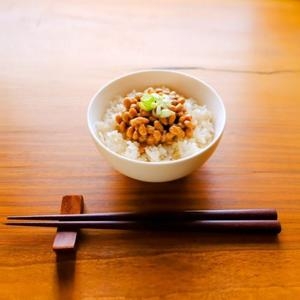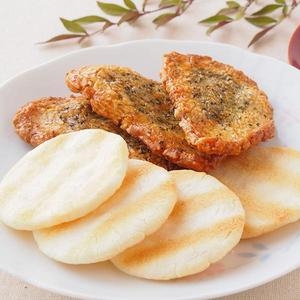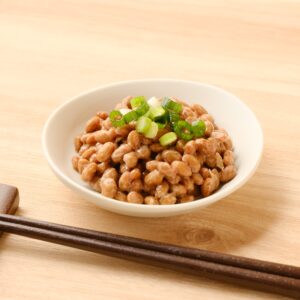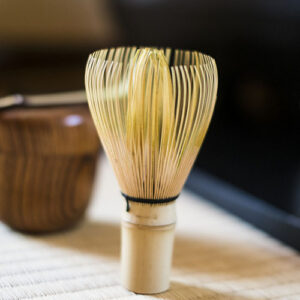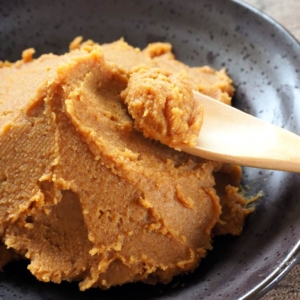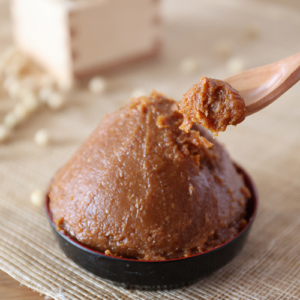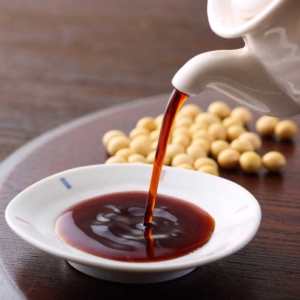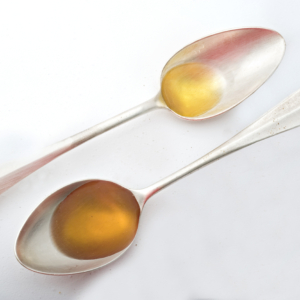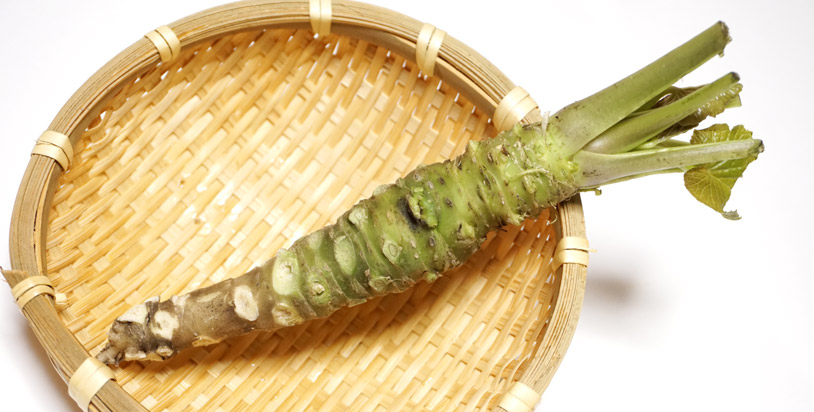
If you are fond of sushi, you must have heard about wasabi. Yes, that hot condiment usually placed between the fish and rice in sushi. Wasabi has a unique, yet refreshing fragrance and has a taste that hit your nose at first.
Where does the hot green paste come from? And why is it used for sushi?
There are so many interesting facts about wasabi that we are about to tell you. So keep scrolling down and discover something new about wasabi in this article!
<
What is Wasabi?
The wasabi (山葵) derived from the rhizome of the Wasabia japonica or the Japanese horseradish. It is a plant native from Japan, one of the pungent condiments which usually used for many foods such as sushi, for hot dipping sauce with soy sauce, as a spice or herb, or to add a wasabi flavor in processed foods.
To eat the wasabi, the rhizome needs to be grated using metal or porcelain grater.
Traditionally, sharkskin also used to grate the wasabi.
The grated wasabi will rest for one or two minutes to develop its flavor. However, the freshly grated wasabi will lose its scent and hot, authentic flavor in about 20 minutes, so be sure to eat it in its fresh state. That is why some traditional Japanese sushi restaurant will only prepare the wasabi when ordered.
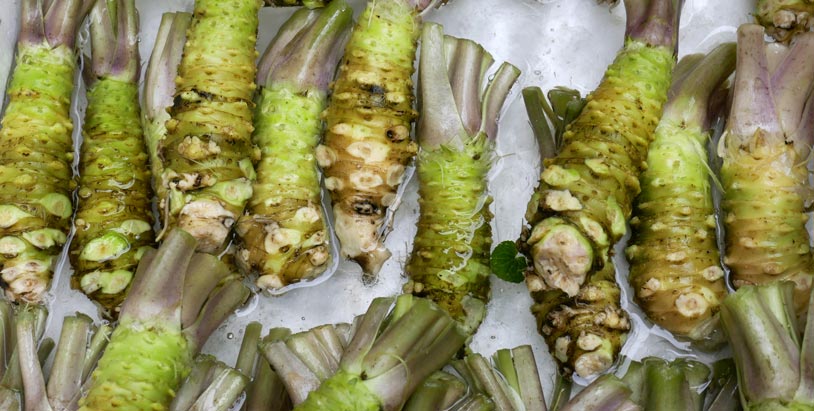
But wait, how about the wasabi we usually eat? The green wasabi paste we usually eat has a strong scent that can remain for a long time.
Here’s a quick fact: more than 90% wasabi paste served or sold, both in Japan or outside Japan, are actually fake!
What we mostly have seen and tasted is the imitation of wasabi, which has a different taste from the real wasabi.
Wasabi has been in Japan’s culinary and medical history since a long time ago,
but its existence becomes popular worldwide since 1980 because of its usage in sushi.
Wasabi has a lot of interesting facts you might not know. Let’s discuss it further by knowing its facts.
Wasabia japonica said to be very delicious if cultivated in the clean water
Cultivating the Wasabia japonica requires several conditions that make this plant can only be cultivated in a limited place, even in Japan.
The plant can be cultivated using two methods that will differ according to the cultivating area: hydroponic and field cultivation. Regardless of its cultivation method, Wasabia japonica must be grown under fresh air (around 8 degrees to 18 degrees Celsius) in the mountainous area with an abundant amount of clean water. Wasabi is intolerant of direct sunlight and loves high humidity in summer.
Moreover, it takes 1,5 years to 3 years to harvest the fully grown Wasabia japonica. The plant will be ready to harvest when the bright color root-like object, or the wasabi’s rhizome, reaches 3 inches and have a nice cylindrical shape with a strong wasabi fragrance.
Their stems are hand-picked one by one, cleaned with running water, and then separated from the leaves and root. Any bumps in the wasabi’s rhizome will be trimmed before it is ready to be sold in the supermarket. The wasabi leaves and its long stems are also edible and delicious as salads.
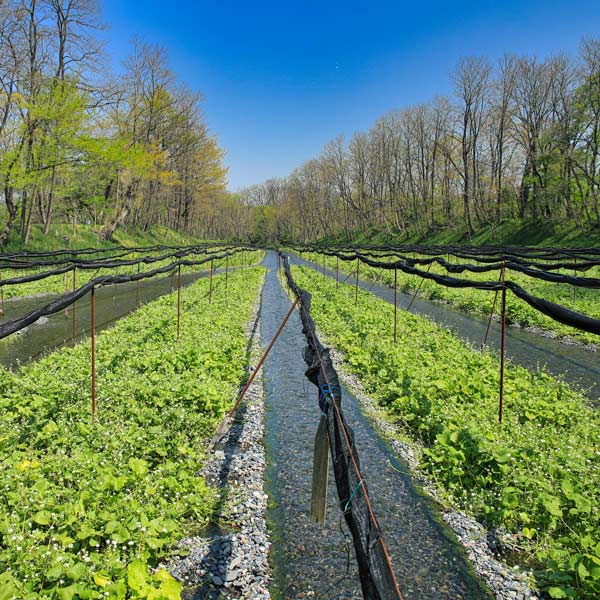
Wasabia japonica is very rare and expensive
As mentioned above, wasabi’s cultivation is quite difficult and requires a lot of time and effort. There are wasabi plantations outside Japan that hopefully help to provide more wasabi, but the number still unable to satisfy the commercial demand.
This makes the real wasabi (Wasabia japonica) is notably rare and expensive. Wasabi becomes the most expensive vegetable in the world, with the price up to $250 per kg.
Adding real grated wasabi in your sushi plate, for example, could add another $3-$5 to your bills.
However, not everyone has the opportunity to taste real wasabi. Only a few Japanese traditional restaurants or high-end restaurants can serve you real wasabi.
You may wonder if it’s even worth it to try after hearing such price, right?
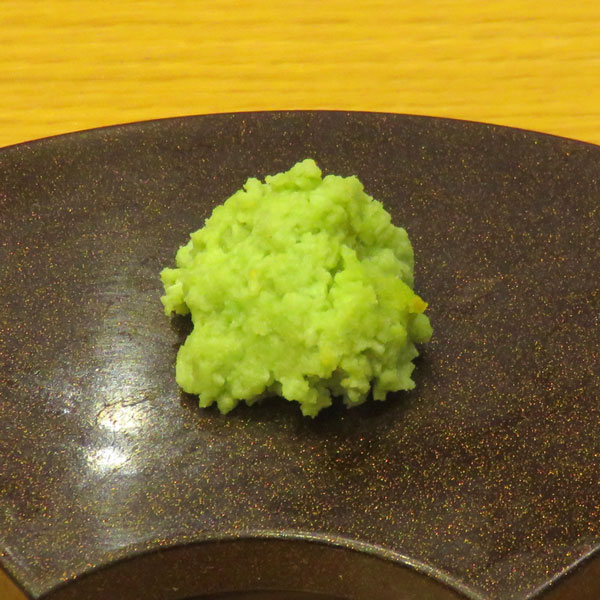
Most of the wasabi paste is fake
Because the real wasabi plant is rare and expensive, people make the fake wasabi.
Most of the wasabi paste served or sold is the imitation of wasabi made by mixing European horseradish, mustard, and green food coloring. Some mixture also includes a food stabilizer to help the paste have a similar texture to the real wasabi. Some also include the real grated wasabi, even in just a small amount.
These ingredients were chosen because they have a similar chemical compound to the real wasabi.
Moreover, horseradish and mustard are a plant from the family Brassicaceae, the same family with real wasabi.
Buying the imitation of wasabi is perfectly fine, because it’s convenient, easy to find, and has a reasonable price. However, please note that it will have a different taste from the real wasabi.
We recommend you compare them if you have any opportunity!
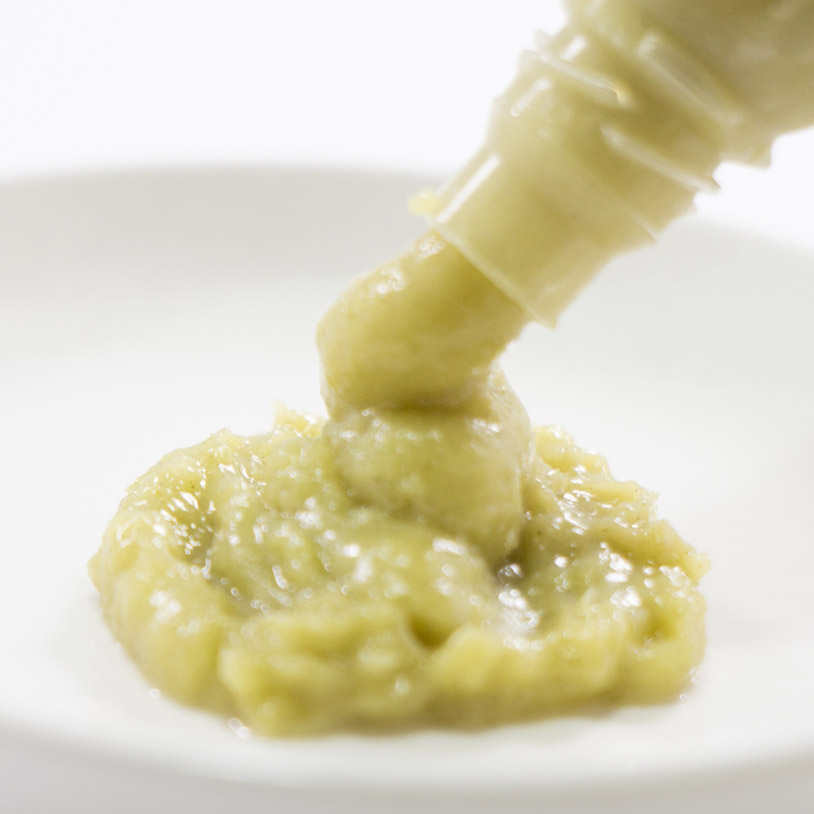
What does Wasabi Taste like?
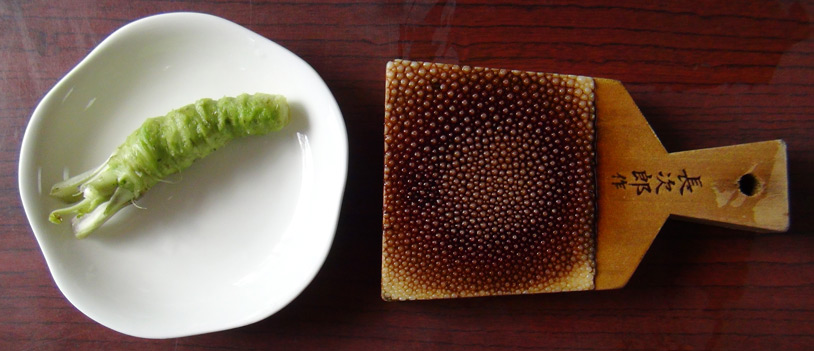
Wasabia japonica with sharkskin grater
The real wasabi’s taste can be defined to have a sharp and hot taste that will firstly hit your nose. The more you feel it, wasabi will give a pleasant mild herbal-like taste with natural sweetness, with no burning sensation at all. It has an unexpectedly smoother and cleaner taste, unlike the wasabi paste made with horseradish.
The taste and the smell of wasabi could be extremely new and unique for non-Japanese people, but people will take a liking to its taste if wasabi is eaten with the right food (sushi or sashimi, for example).
Real Wasabi vs Western Wasabi
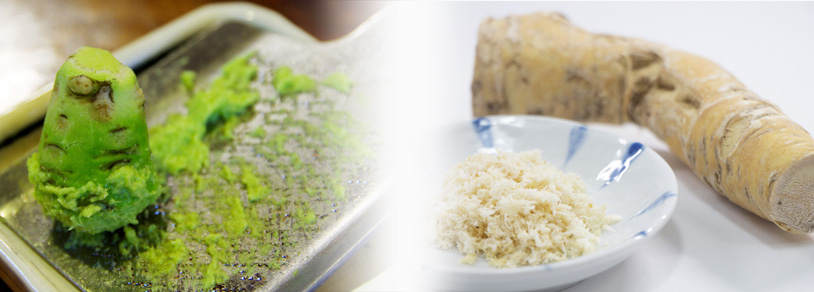
There is a high possibility that the labeled as wasabi paste products sold in the supermarket or internet are not genuinely made from the Wasabia japonica plant. Horseradish (or in Japanese is called the Western Wasabi, 西洋わさび) often used as the main ingredient for wasabi’s substitute.
The authentic wasabi made of the finely grated real wasabi (Wasabia japonica) plant. While the fake/imitation wasabi made with a mixture of western wasabi (horseradish), mustard, and green food coloring.
These two are a different thing, so let’s point out their differences to make sure what kind of wasabi did you buy!
Wasabi made with Real Wasabi
•Aroma: more herbal, and has a plant-like aroma.
•Taste: the real wasabi will firstly hit your nose with its unique scent, followed by sweetness, and leaving spiciness. It has an unexpectedly smoother and cleaner taste with no burning sensation.
•Consistency: grated, gritty texture.
•Color: earthy, natural green color.
•Form: only from the finely grated Wasabia japonica rhizome.
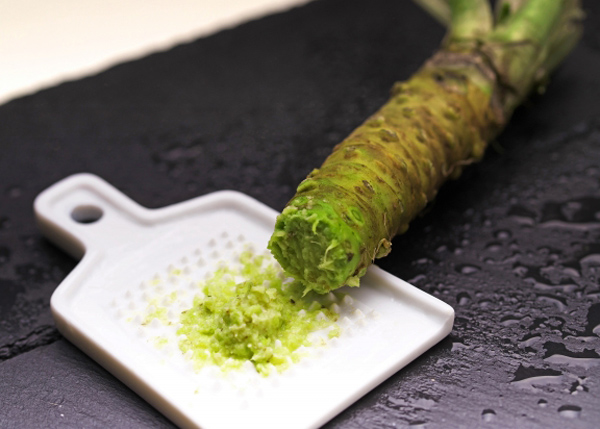
Wasabi made with Western Wasabi
•Aroma: strong, unique odor.
•Taste: strong taste with longer burning effect.
•Consistency: pasty and thick consistency.
•Color: may have a bit light green, but also can be a thick green color. It depends on the manufacturer.
•Form: can be in may in the form of a fine powder, or the ready-to-use wasabi paste.
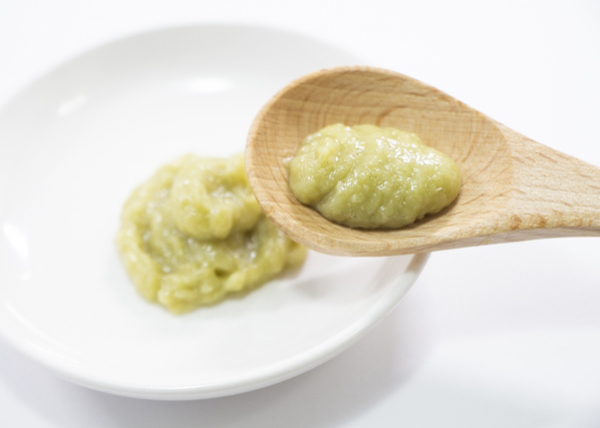
Why Wasabi Used for Sushi?
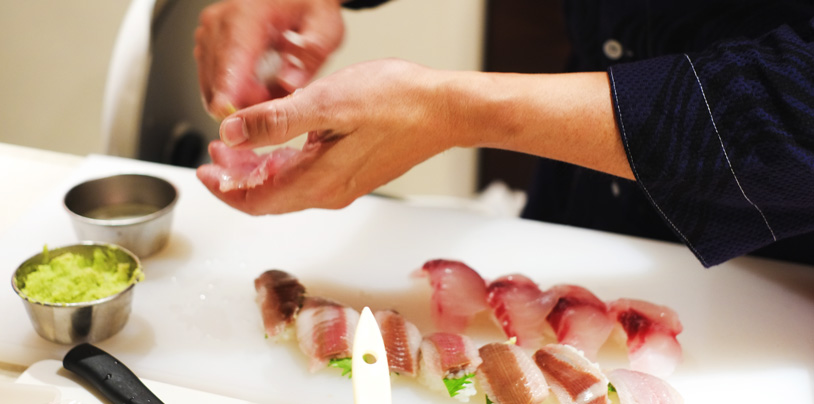
The Japanese Sushi Chef in Japan will add wasabi into Sushi and Sashimi. Have you wondered why?
The most easy-to-spot effect after adding a pinch of wasabi into Sushi and Sashimi is that it will reduce the fishy smell from the food (because the dish uses raw fish). The next effect you will find is when you have a bite. The wasabi will give a refreshing, hot flavor to the food.
Wasabi has a great effect on the dish if consumed in just a small amount. Here’s some benefit you can get from wasabi:
Wasabi Benefit 1 Antimicrobial Effect to Prevent Food Poisoning

The historian believed that wasabi was originally combined with food during the Edo Period to reduce the smell from raw fish. Wasabi also believed to have the ability to stop the growth of bacteria in food.
This assumption has been approved by some researches. Wasabi can directly reduce the pathogenic bacteria that can cause food poisoning or other diseases if added alongside Sushi and Sashimi (or other food that might contain pathogenic bacterias).
The antimicrobial effect was caused by isothiocyanate (ITC) or the main active compound contained in wasabi and horseradish.
Wasabi Benefit 2 Anti-Inflammatory Effect

Research states that one of the ITCs structure, the 6-(methylsulfinyl) hexyl isothio-cyanate (or simply called as 6-MITC) is responsible to reduce the production of inflammatory factors in our body. This compound influences the body’s immune and inflammation-related genes to activate their anti-inflammatory functions.
In short, wasabi also has the anti-inflammatory effect that protects our body from tissue injuries and pathogen invasions.
Source:
Effect of Wasabi Extract on Inflammatory Response of BV2 Cells Induced by Lipopolysaccharide
Wasabi Benefit 3 Help to Prevent Cancer and Cardiovascular Disease

The ITCs in wasabi appear to have some positive anti-cancer effects in the body. Some researchers have reported that the vegetables contained ITCs like wasabi could reduce the risk of developing colon cancer, breast cancer, stomach cancer, and other certain human cancers. The research also reported that wasabi potentially reduces the risk of cardiovascular disease.
This concludes that Cruciferous vegetables or vegetables of the family Brassicaceae (wasabi, horseradish, cauliflower, daikon, etc) are recommended to be added to the daily diet to reduce the risk of several cancers.
Source:
Wasabi – Japanese Horseradish
Please don’t forget to eat your Sushi and Sashimi alongside with wasabi. Not only add more flavor, but wasabi also has potential health benefits for you!
How to Eat Wasabi? ~ Delicious Cuisine to Enjoy with Wasabi
Wasabi has a refreshing taste with spicy taste at the end. So what the most delicious cuisine to enjoy with wasabi?
We will give you our personal preferences about the best way to eat wasabi.
Wasabi is Delicious for Japanese Cuisine

“Wasabi goes very well with raw food such as sushi and sashimi.”
As we may expect, wasabi has become an inseparable condiment of sushi and sashimi. Tuna Sushi, in particular, is very good with wasabi, especially fatty part of tuna: chūtoro (medium fatty tuna) and ōtoro (pink fatty tuna).
The refreshing taste of wasabi will neutralize the fat contained in the tuna, which makes your sushi more delicious. However, other sushi variety also delicious to enjoy with wasabi. Also, be sure to add a pinch of wasabi every time you eat sashimi.

Wasabi also often eaten with Zaru Soba or the cold buckwheat noodles. After tasting the original taste of the soba with the soup, try mixing the soup with the toppings available.
Put a bit of wasabi and the green onions in the soup and mix. Next, dip the noodles into the soup at one bite amount, and slurp! Wasabi will enhance the soup to be a more refreshing and slightly hot flavor.
Have a similar sensation with the tuna sushi, wasabi also delicious to eat with Maguro Donburi (Tuna Bowl) or a serving of rice topped with tuna.

Yakiniku (grilled beef) that has natural fat is also delicious if enjoyed with wasabi.
One menu that has top chemistry with wasabi is the Harami or the skirt steak. Take one bite of Harami with the dipping sauce and add a pinch of wasabi to it. You can enjoy the texture of the meat with the refreshing, yet a bit spicy taste of wasabi. Every bite will be more delicious that you can’t stop!
Yakitori (Japanese skewered chicken) also delicious to eat with wasabi, especially for the menu called Sasami. Sasami is the tender cut from the chicken breast that has a mild flavor. Some Japanese restaurants will serve Sasami with wasabi to leave a refreshing flavor.
Some Japanese cuisine usually served with a tiny portion of wasabi. This proves that wasabi is a good companion for some dishes. If you haven’t tried to eat wasabi, we will look forward to your first wasabi experience!
Wasabi also become popular overseas, which means there are so many new delicious dishes to try with wasabi. Recently, food such as tacos and guacamole is delicious when a little wasabi was added to it. So why don’t we try it too?
Unique Way to Try Wasabi: Wasabi Flavor Processed Food
There are many processed food that has a wasabi flavor, especially in Japan. These food vary from sweets food to savory foods and made from the wasabi paste or wasabi powder.
-
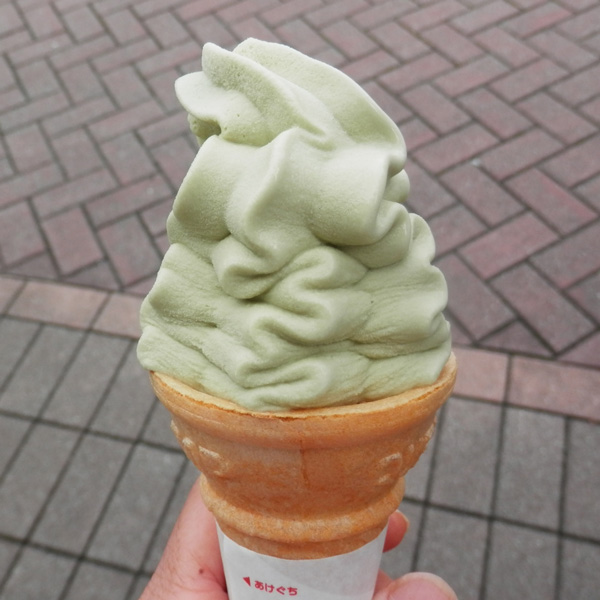
Wasabi Ice Cream
Japan always have the idea to make a unique ice cream flavor. What do you think of this flavor?
-
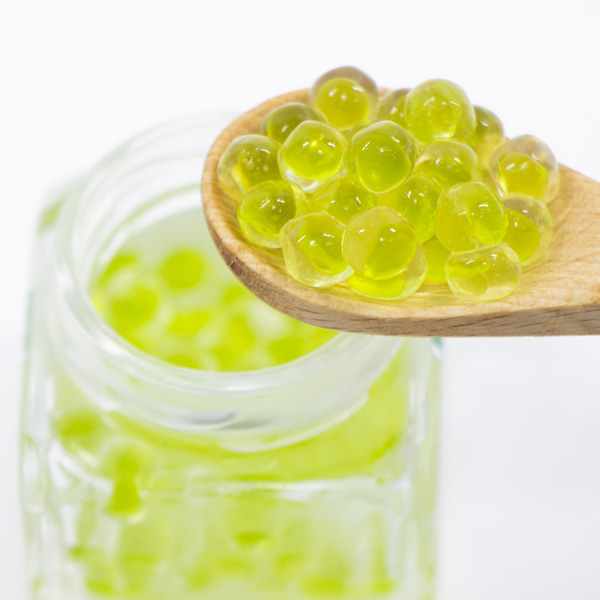
Wasabeads (わさビーズ)
or known as ‘wasabi pearls’ and ‘green caviar’. This is probably the latest wasabi flavor processed food introduced.
-
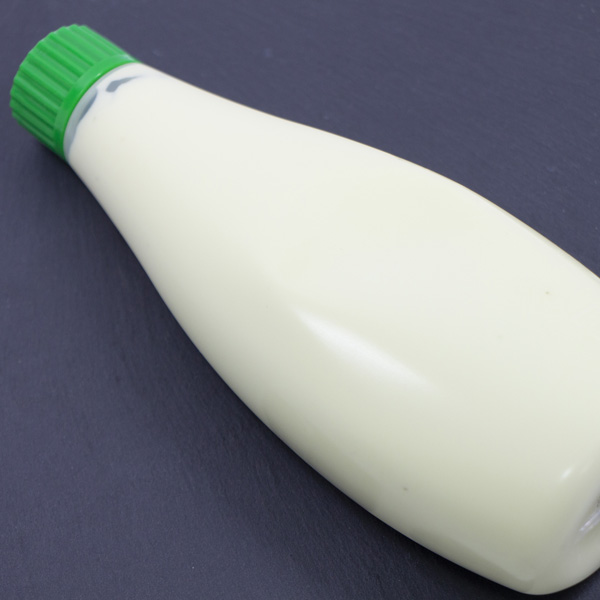
Wasabi Mayonnaise
This might be the perfect condiment if you want to enjoy wasabi and mayonnaise at once.
Wasabi Peas Recipe
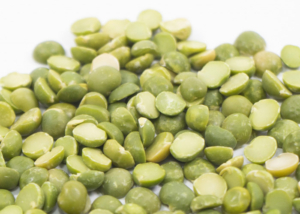
Wasabi Peas Recipe
Equipment
- Oven
- Parchment paper
- Bowl
Ingredients
- 2 cups Freeze-dried peas
- ½ cups Finely grated fresh wasabi. If not available, using wasabi paste is OK
- 2 tbsp Dry mustard powder
- 1 tbsp Kosher salt
- 2 tbsp Mirin
- 2 tbsp Rice vinegar
Instructions
- Preheat the oven to 225 degrees Fahrenheit (107 degrees Celcius) and line a baking sheet with parchment paper. Whisk the wasabi, mustard powder, salt, mirin, and rice vinegar in a medium bowl.
- Add the freeze-dried peas into the bowl, and stir gently to make the peas are well-coated with the mixture.
- Put and arrange the peas on the prepared baking sheet. Make sure no peas are overlapping to make the peas perfectly baked.
- Bake for 60 minutes or until dry and crisp.
- Let it cool in the room temperature, then transfer it in a bowl (if consumed immediately), or store it in an airtight container.
Precautions for Wasabi Consumption
Please prevent any direct contact of wasabi with eyes or nasal passages. The strong scent may hurt your eyes or nose.
Wasabi is advised to be consumed only in a small amount in every dish. Although it has potential health benefits such as antimicrobial effect, anti-inflammatory effect, and anti-cancer effects, wasabi could adversely cause side effects such as gastrointestinal disturbances, including diarrhea and nausea.
Wasabi Q & A
- What is wasabi?
- Wasabi (Wasabia japonica) is a plant native from Japan. It is one of the pungent condiments which usually used for many foods such as sushi, for a hot dipping sauce with soy sauce, as a spice or herb, or to add a wasabi flavor in processed foods.
- What is wasabi made of?
- Real wasabi made by grating the rhizome of Wasabia japonica (Japanese horseradish) plant. However, the real wasabi is difficult and expensive to get because of its tricky cultivation conditions. Therefore, many make the fake wasabi with mixing horseradish, mustard, and green food coloring as the real wasabi’s substitute.
- How hot is wasabi?
- Wasabi has a sharp and hot taste with no burning sensation at all. It has a new taste of pungent condiment (for the first-timers) because it has a different taste to chili peppers.
Wasabi receives its pungency attributes from the so-called allyl isothiocyanate. The hot, pungent flavor from wasabi comes from grating the wasabi rhizome. This activity will break the cellular tissue of wasabi, and thus will produce its fragrance and flavor.
- Real wasabi vs Western wasabi: what is the difference?
-
The real wasabi made of the finely grated wasabi (Wasabia japonica) plant. While the fake/imitation wasabi made with a mixture of western wasabi (horseradish), mustard, and green food coloring.
Discover more difference here.
- What is wasabi peas?
- Wasabi Peas (山葵豆, wasabi mame) is a spicy snack with a wasabi flavor on it. This snack is popular because it is easy to make, yet suitable for many occasions.
Find the Wasabi Peas Recipe here.
- Where to buy wasabi?
- Finding the real wasabi outside Japan would be more difficult. But some online stores might be selling real wasabi in either frozen and vacuum state. You could buy the real wasabi (to enjoy the authentic taste of wasabi with more cash) or the wasabi paste (mostly made with horseradish) that has more reasonable taste.
- How to eat wasabi?
- Wasabi could be a good companion to several dishes. The most popular dish to eat with wasabi is raw fish dish, such as sushi and sashimi. However, wasabi is also great to eat with zaru soba (cold buckwheat noodles), yakiniku, and yakitori.
To eat the wasabi, just add a pinch of wasabi into every bite of the dish or mix it with the dipping sauce available for the dish.
- How hot is wasabi?
-
Fresh wasabi rhizome can be stored for a week or two in the refrigerator. Wrap the wasabi rhizome with a damp paper towel in an uncovered bowl, and place in the refrigerator. Please do not use plastic so the rhizome can have a nice air circulation.
The wasabi paste can be stored for a longer period. Please refer to the exact expired date at the product package.

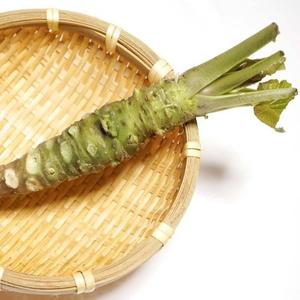
 Content List
Content List
